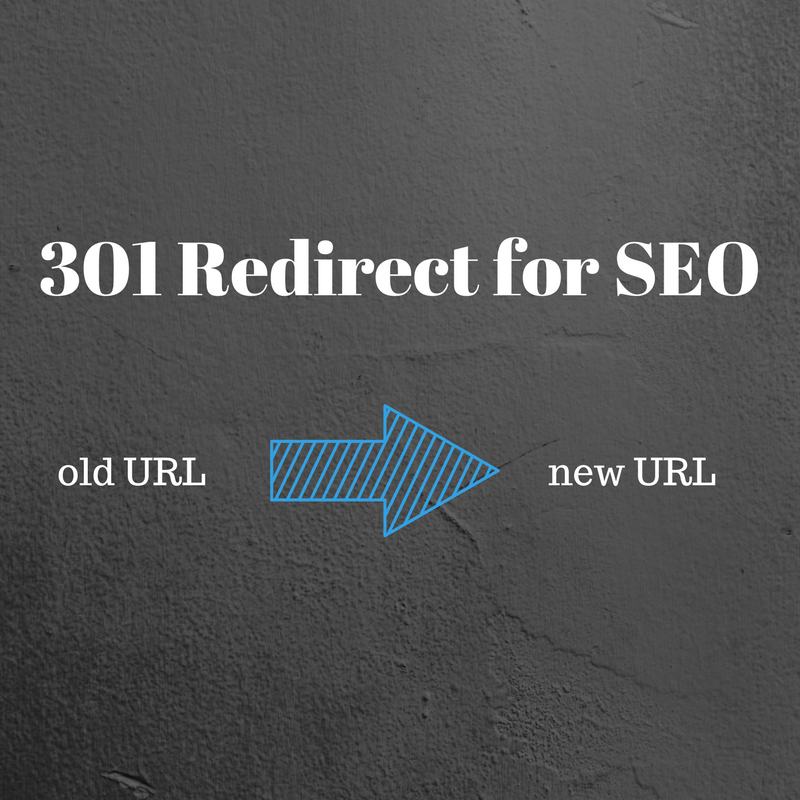
If you’re moving a website from one URL (Uniform Resource Locator) to another, you need to ensure your visitors get sent to the right place. This is known as a 301 redirect in the tech world. A 301 redirect is very useful in search engine optimization (SEO) because it maintains a website’s authority and search rankings even after changing its URL.
There are three types of redirects:
- 301 – permanent move
- 302- temporary move
- 307- also a temporary redirect
The best example of a 301 redirect is like when your mailing address changes and you need the post office to forward your mail with your old address to the new one. A 301 redirect notifies search engine crawlers that the URL that used to “live” in A location has moved to a new B location. If you’re not familiar with search engine crawlers, let’s briefly discuss how search engines crawl websites.
The search engine, such as Google, Yahoo or Bing, crawls the website as a group of web pages. Some web pages may be crawled while others may be left out.
Each page on your website is assigned with:
- Keywords that are relevant for the page
- Page-specific SEO authority (or ranking power)
- Backlink profile (or external hyperlinks that point directly to that page)
- Rankings in the Search Engine Results Pages (SERPs)
Why You Should Set Up a 301 Redirect
There are several different reasons why you might need to set up a 301 redirect. Here are some of the most common reasons:
- To rebrand/rename a website with a different URL path
Ex: Original “About” page: http://www.example.com/about.html
New “About” page: http://www.example.com/about/
- To secure your website after receiving a newly acquired security certificate (SSL)
Original: http://www.example.com/
New: https://www.example.com/
- To redirect your visitors to your new service or product
Original: http://www.example.com/old-service/
New: http://www.example.com/new-service/
- To conform with web conventions by using one URL to maximize domain authority
Original: http://example.com/
New: http://www.example.com/
A 301 redirect is vital when a brand is changing its company or website name to maintain the power of inbound links to the original URL on the new domain. The 301 redirect is also necessary to send website visitors and search engine bots to the right web address.
301 redirects can transfer between 90% – 99% of the SEO authority (rankings, pages indexed, search signals) from the original URL to the new URL. You can still make necessary changes to the new website, all while maintaining most of your historical SEO authority.
In regards to search engine optimization (SEO), a 301 redirect, which is permanent, is better than a temporary redirect because it moves inbound links from the redirected domain to the new one. It also lets search engines know that the content can be found at the new URL. This helps prevent your website from dropping in search traffic and helps maintain its search rankings.
301 Redirects Take Time
301 redirects can effectively transfer your SEO authority from the original source to the new location fairly quickly. Yet, be aware that search engines, such as Google, will take some time to recognize the transfer and update their index. Factor in a little more time for the SEO authority to transfer to the new location.
A website that has a good crawl frequency rate will see some fluctuations in ranking after 301 redirects are set into place, but things will stabilize after a couple of weeks. This can take longer if the 301 redirect is between different top level domains.
Relevance Affects Ranking
If you want to maintain your old site’s search ranking, make sure that the new location is still relevant, or else your rankings will drop. You will have a better chance at holding on to that SEO authority as long as the destination pages you are pointing your redirects to are still relevant to the content from the original location. Simply changing keywords might change your rankings, so be sure to keep the keywords relevant to your new site.
For example: Your old site was dedicated to selling black Prada handbags, and your new website sells gold Prada handbags. This will drop your rankings because the Google search terms “black prada handbags” are now “gold prada handbags,” and are no longer relevant.
301 Redirect Does Not Get Rid Of Penalized Pages
Let’s say that your old page has been penalized by Google and you want to start fresh with your new page. Unfortunately, that penalty can follow the redirect to your new URL if you 301 redirect a penalized page. Many people in the same position have tried to trick the system with a 301 redirect, but in an attempt to combat the scam, Google now takes longer to recognize the redirect.
After a penalty period expires, some pages can recover in rankings. This can happen anywhere between a month, which is rare, or up to two years. However, each case is different and there is no set amount of time for penalty recovery.
Keep 301 Redirect Active For A Year
It might take a while for you to inform the necessary parties that your website address has changed. So, you can keep your 301 redirect active for a year to ensure that your visitors can find you. You can even rewrite your .htaccess file to keep the redirect active forever.
